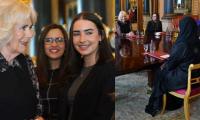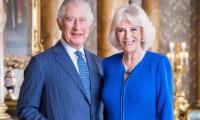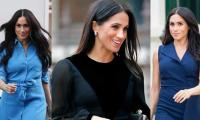World orders are not permanent arrangements. They materialise as nations try to formulate a system that reflects their relative strengths and also ensures peace and prosperity for all.
At the Concert of Vienna in 1814 the four major allied powers of the time namely Austria, Russia, Prussia and Britain, after vanquishing Napoleon, formulated a system of coexistence to ensure world peace and stability. These were the four major European powers in a world where Europe still occupied central stage.
Their pact largely regulated world affairs for a century, though there were disturbances caused by the Crimean War and other local conflicts. The decay of the Ottoman Empire and the emergence of Germany as a financial and military power under Bismarck created new realities that demanded a re-alignment of power. World War I took place against this background as an emergent Germany sought a more assertive position consistent with its new might.
Following the defeat of Germany and the axis powers in World War I, the victorious nations set about distributing the spoils of war between themselves. A large part of the Ottoman Empire was carved up into small states that were gifted to Britain, France and Russia. The fly in the ointment was the fall of the Tsarist monarchy in Russia and it's replacement by a new communist regime.
The new Russia absorbed its share of Ottoman States and emerged under the name of the USSR. However, despite its defeat, Germany was not yet done and in the eastern sphere Japan was also beginning to flex its muscles. The rearmament of Germany followed and World War II subsequently ensued. These two world wars also served to draw the United States out of its insular stance onto the global stage as a major player in world affairs.
At the end of World War II the new world order that had been brewing for over half a century finally took shape. This new order essentially consisted of two parallel components. The first, also called the cold war ensured a military balance between the United States and the Soviet Union in both Asia and Europe. Both sides took necessary steps to ensure that they did not venture into each others domain and respected each others territories and allies. The second component was a tussle between two different socio-economic and political systems.
The American version encouraged and fostered democratic political systems and free trade economic policies. It rested on the notion that prosperity would come through these channels of aid and trade and that wars would be too costly an option to consider. The system accepted the primary political position of the United States and of the dollar as the premium currency of trade. The Soviet version offered a more centralized form of government and state owned and managed economies. The UN was also a consequence of these new arrangements.
The unravelling of this order came about with the breakup of the USSR. The states that Russia had absorbed from the Ottoman Empire resumed an independent status. Attempts were made to draw a reduced Russia into the US fold but these eventually failed as Russia, still smarting from its defeat, worked to re-establish its position as a leading world power. American military incursions in the Middle East further eroded the status quo of the cold war set-up that had persisted since World War 2. With no USSR to offset American military interference in the Middle East, destabilization of the existing world order came quickly.
The growing economic might of China and the spread of technology to wide and distant areas of the globe has added to the need to define a new global structure. This was further reinforced by the collapse of the existing financial system in 2008.
The US, under Trump, has itself undone many components of the existing order. China’s aspirations and assertion of strength are boldly demonstrated through it’s BRI plan.
For any new order to succeed it must recognise the growing economic might of China and offer it adequate space to accommodate it's just aspirations and demands. It must, similarly, also accept Russia as a major force and accommodate the growing status of other emerging powers. It must cease to legitimize the forceful occupation of homelands in Palestine and Kashmir. It must open the doors of the Nuclear Non Proliferation club to all nine eligible members instead of the chosen five.
New systems need to be designed to address the problems of climate change, trade equity and cyber operations. The US and China must both refrain from using their might to apply tariffs and sanctions on free trade. The US will also have to learn to respect national boundaries and refrain from military adventurism in other countries and regions. Parochial and chauvinistic outlooks that discourage the free movement of people and talent across the globe and that restrict access to technology and advanced education will further polarize the world and lead to instability where smaller nations will react against a system that effectively discriminates against them and excludes them from the benefits of globalisation and economic growth.
The success of the new order will depend on how generously the major powers, namely the US and China, are willing to share the fruits of success with other nations. An inclusive order, with cooperation on global challenges, has a realistic chance of success but one that seeks to confine benefits and prosperity to a chosen few will lead the world to potential catastrophe.
The writer is a senior surgeon, poet and sports aficionado.
As usual, any such deal, aiming to resuscitate ailing economy, brings to fore urge and resolve to halt further...
A representational showing sticky notes on a board. — Unsplash/FileThere are some common themes from the lives...
Whether the Daanish Schools effort has been able to live up to its principles or not may be debatable
According to the federal government, last year 653,100 people experienced homelessness on a single night in America
Another advantage for Pakistan is the enhanced teledensity and internet penetration
Both media spheres need to dovetail in amplifying the urgency of addressing climate change at the local, national, and...







